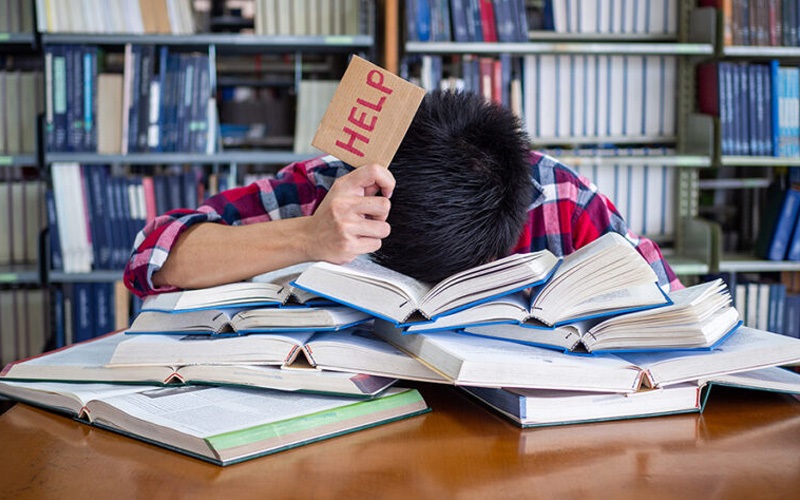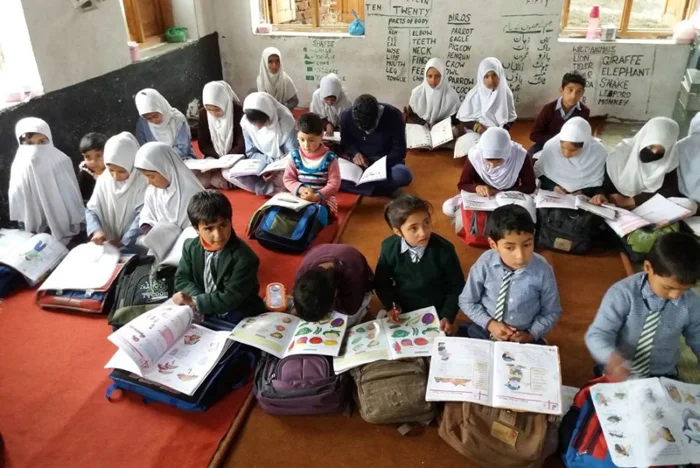
Srinagar- A new study conducted by the Institute of Mental Health and Neurosciences (IMHANS) has shown widespread academic stress prevalent among students in Kashmir, with health experts advising parents and guardians to closely monitor the children and take preventive measures to address any emerging mental health concerns they may face.
The study shows that at least 60-65% of school-going adolescents are suffering from academic related stress in Kashmir.
The study, titled “Prevalence of psychiatric morbidity among school-going adolescents in the age group of 13–19 years,” asserts that there is a very high prevalence of psychiatric morbidity (anxiety combined with depression) of any kind among adolescents in Kashmir, many of which are unidentified and thus untreated.
The study found depression as the most common psychiatric illness among adolescents with a higher prevalence in males, while anxiety disorders are more common among females.
The study was carried out on 16 schools in the twin districts of Srinagar and Ganderbal.
“Stress plays an essential role in the development of various illnesses. Academic stress, stresses from personal life and environment, as well as the ones arising from conflict may be important,” the study says.
Dr. Ubaid Rasool, one of the authors of the study, told Kashmir Observer that they wanted to carry out the study in rural and urban areas and thus chose Srinagar and Ganderbal for the purpose.
“Even though there were similar disorders in Srinagar and Ganderbal, but the academic stress is more predominant in Ganderbal district which is a rural area,” Dr. Rasool said.
The reason, Dr. Rasool said, is that the kids in urban areas go for more outdoor activities than children from rural areas.
The results of the study highlight a worrying pattern of academic stress affecting students of classes 9 to12, revealing a substantial portion experiencing depression, anxiety, and various other mental health challenges.
“Almost all of the students report high academic stress. The teachers need to change their attitude towards the students,” Dr. Rasool added.
The study reveals that 13.7% major depressive disorder is prevalent among school-going adolescents, obsessive compulsive disorder 4.0%, panic disorder 1.4%, self-harming behavior 2.5%, generalized anxiety disorder 2.5%, social anxiety disorder 2.2%, dysthymia 1.7%, and adjustment disorder 0.8%.
The study found that the panic disorder and borderline personality disorder as a group were more commonly found among females compared to males. Also, 34% from urban and 28% from rural areas met the criteria for any psychiatric disorder, it noted.
The study says children and adolescents represent a tender part of the human life cycle and they may be at a higher risk of psychiatric disorders.
Dr. Rasool who is also consultant, Psychiatry, IMHANS-K said many children whom they examined were disturbed and stressed due to certain events like encounter, killings or any other untoward incidents in their locality.
He said while many were stressed due to their issues in family like parental discords and divorces.
“Poverty, academic stress and trauma after a killing in the locality was prominent among the children,” Dr. Rasool added.
He further said that the team wasn’t expecting such a high rate of psychological issues among the kids.
“..The most surprising thing was they didn’t know about their disease, like depression and anxiety and many of them were living without any treatment,” he added.
The study said there is a need for further research in this age group and teachers and parents need psycho-education for identification of such children.
“The parents should be sensitive enough to understand that their child is under stress and any negative happening at home or outside will impact their mind,” Dr. Rasool added.
Dr Yasir Hassan, Professor at IMHANS told Kashmir Observer that if these mental health issues aren’t addressed in teenage, the patients can develop suicidal tendencies in future.
“This is the age where maximum mental health issues including depression and anxiety start,” he said, adding that IMHANS witnesses overwhelming cases of “self-cutting/self-arming” cases nowadays.
“This was not common earlier .However, today it is prevalent and it means a cry of mental health,” he added.
Notably, Jammu and Kashmir ranked highest in attempted suicides across the country in 2022, as per the National Crime Records Bureau (NCRB). Out of the 1769 instances reported throughout India during the year, 497 were specifically recorded in Jammu and Kashmir.
Follow this link to join our WhatsApp group: Join Now
Be Part of Quality Journalism |
Quality journalism takes a lot of time, money and hard work to produce and despite all the hardships we still do it. Our reporters and editors are working overtime in Kashmir and beyond to cover what you care about, break big stories, and expose injustices that can change lives. Today more people are reading Kashmir Observer than ever, but only a handful are paying while advertising revenues are falling fast. |
| ACT NOW |
| MONTHLY | Rs 100 | |
| YEARLY | Rs 1000 | |
| LIFETIME | Rs 10000 | |












